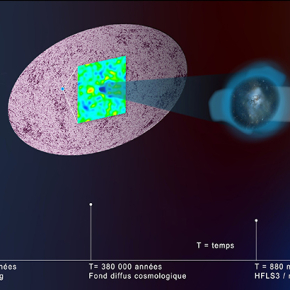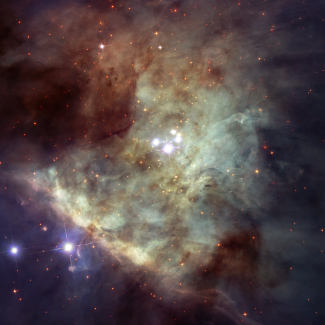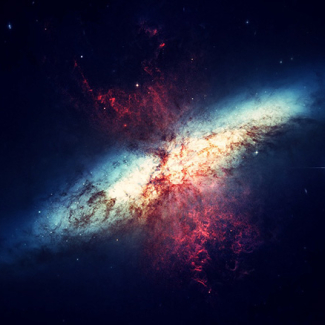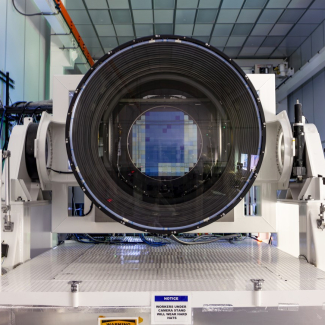
Cosmic water cloud reveals the temperature of the early Universe
|
|
An international research team has discovered a new way of measuring the temperature of the cosmic microwave background less than a billion years after the Big Bang. Using IRAM's NOEMA1 radio telescope array, the astronomers, including a CNRS researcher2 , used a cloud of water vapour to reveal the state of the Universe at this very early stage in its history. Their findings confirm that it cooled very rapidly, and open up new prospects for the study of the elusive dark energy. They are published on February 2, 2022 in the journal Nature.
The temperature of the cosmic microwave background radiation, a remnant of the energy unleashed by the Big Bang, has for the first time been measured at a very early stage in the history of the Universe, a mere 880 million years after it first formed. This remarkable result was achieved by an international group of astrophysicists who used NOEMA to observe a massive starburst galaxy, HFLS3, which was active at that time in cosmic history.
They discovered that a cloud of cold water vapour in HFLS3 was casting a 'shadow' on the cosmic background radiation. The shadow is caused by the fact that the water vapour absorbs the warmer radiation from the cosmic microwave background as it travels towards the Earth: its degree of darkening indicates the temperature difference. Since the temperature of the water can be determined from other properties, the difference indicates that the temperature of the relic radiation from the Big Bang at the time was about seven times higher than in today's Universe.
The standard cosmological model assumes that the Universe has been cooling ever since the Big Bang, and that it continues to do so. However, until now, this cooling has only been directly confirmed for relatively recent periods in cosmic history. Whereas today's Universe is immersed in cosmic background radiation with a temperature of 2.7 Kelvin (-270.45 °C), less than a billion years after the Big Bang its temperature was approximately 20 K (-253.1 °C). All the matter in the Universe would have been exposed to it at that time, implying that processes such as the evolution of galaxies must have been very different from those taking place today.
These findings could also have direct implications for the nature of the elusive dark energy. Scientists believe that dark energy has caused the accelerated expansion of the Universe over the past few billion years, although its properties remain poorly understood because it cannot be observed directly. However, they do affect the changing rate of cosmic expansion, and therefore the rate at which the Universe is cooling. By accurately measuring the temperature of the cosmic microwave background throughout the history of the Universe and comparing the results obtained with the predictions of the Big Bang model, it should be possible to determine and constrain the effects of dark energy.
The research team intends to use this novel method to survey other clouds of cold water vapour in distant galaxies in order to measure the cooling of the Universe throughout its history, and thus continue to explore the early history of the Cosmos and improve our understanding of dark energy.
NOEMA is the most powerful radio telescope array in the Northern Hemisphere. It is located in the French Alps and operated by the Institut de Radioastronomie Millimétrique (IRAM), founded in 1979 by the CNRS and the Max-Planck-Gesellschaft (MPG, Germany), joined by the Instituto Geográfico Nacional (IGN, Spain) as a 3rd partner since 1990.
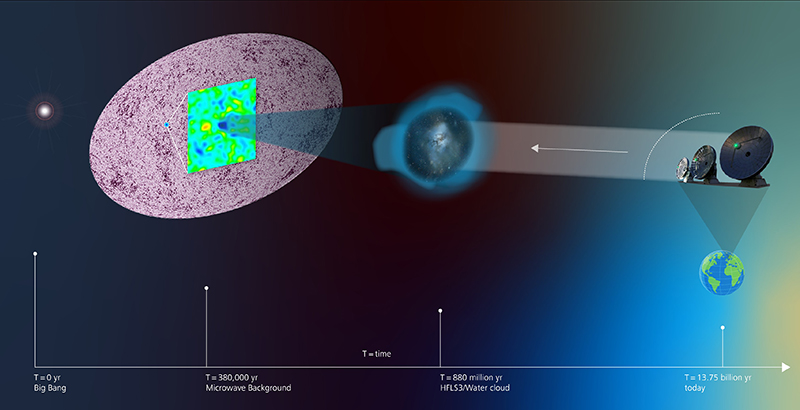
© IRAM/MPIA/ESA/Planck Collaboration/Dominik Riechers/Martina Markus/Universität Zu Köln
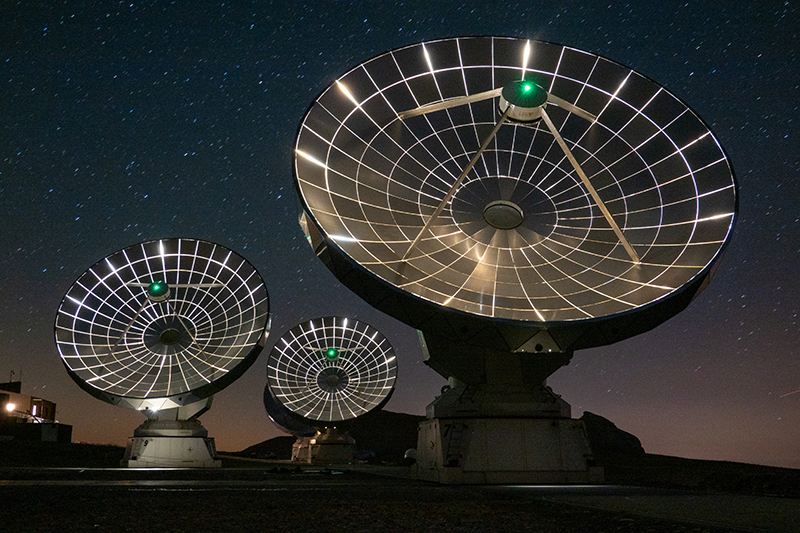
© A. Rambaud/Iram
D'autres images du radiotélescope Noema sont disponibles sur demande.
Microwave Background Temperature at Redshift 6.34 from H2O Absorption. D. Riechers et al. Nature, 2 February 2022. DOI:10.1038/s41586-021-04294-5
